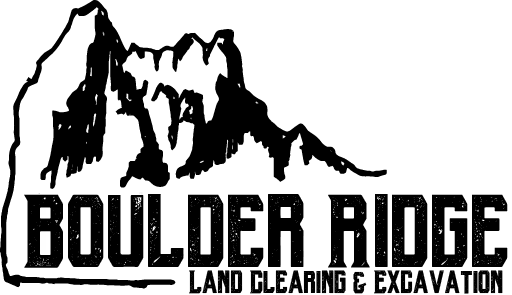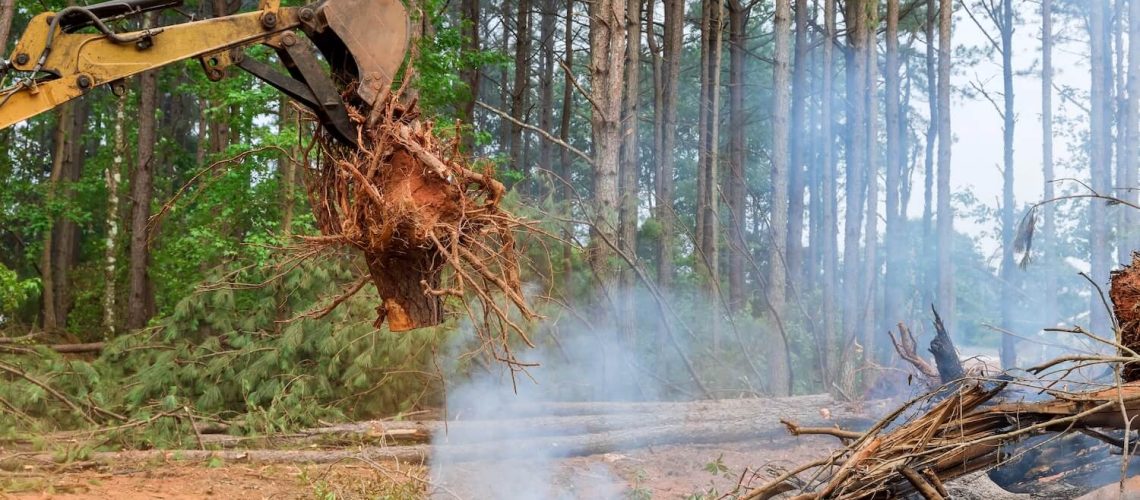Fire prevention is a critical aspect of property management, especially in areas prone to wildfires. With climate change leading to increased temperatures and drier conditions, the risk of wildfires has grown significantly in many regions. Professional land clearing is an essential part of a comprehensive fire prevention strategy, ensuring that properties are safeguarded against the devastating effects of wildfires. This article will delve into the various components of professional fire prevention for your property, focusing on the role of land clearing, its benefits, and the steps involved in creating a fire-resilient landscape.
Understanding Essential Fire Prevention and Land Clearing
Fire prevention encompasses a range of strategies aimed at reducing the risk of fire ignition and spread. It involves both proactive measures, such as land clearing and creating defensible spaces, and reactive measures, like having fire suppression systems in place. Professional land clearing is the process of removing vegetation, debris, and other flammable materials from a property to reduce fuel load and create a safer environment.
The main objectives of professional land clearing for fire prevention are:
- Fuel Reduction: Minimizing the amount of combustible material.
- Creating Defensible Space: Establishing buffer zones around structures to slow down or stop the spread of fire.
- Improving Accessibility: Ensuring that emergency services can access the property easily.
- Environmental Protection: Balancing fire prevention with the preservation of the local ecosystem.
Key Components of Professional Land Clearing for Fire Prevention
1. Home Fire Assessment and Planning
Professional land clearing begins with a thorough assessment of the property. Fire prevention specialists will evaluate the landscape, vegetation types, topography, and proximity to wildfire-prone areas. This assessment helps in identifying high-risk zones and devising a customized land clearing plan.
Key elements of the assessment include:
- Vegetation Analysis: Identifying types and density of vegetation.
- Fuel Load Calculation: Estimating the amount of flammable material present.
- Topographic Mapping: Understanding the terrain and its impact on fire behavior.
- Structural Evaluation: Assessing the vulnerability of buildings and other structures.
Based on the assessment, a detailed land clearing plan is created. This plan outlines the areas to be cleared, the methods to be used, and a timeline for the work.
2. Vegetation Management Systems
Effective vegetation management is crucial for reducing fire risk. This involves:
- Tree Thinning: Removing selected trees to reduce canopy density and minimize the risk of crown fires.
- Underbrush Clearing: Eliminating low-lying vegetation that can act as ladder fuels, allowing fire to climb from the ground to the canopy.
- Pruning: Trimming branches to prevent fire from spreading through tree canopies.
- Grass Cutting: Regularly mowing grass to keep it at a safe height.
The goal is to create a landscape where fire cannot easily spread from one plant to another. This not only protects the property but also enhances the overall health of the remaining vegetation by reducing competition for resources.
3. Creating Defensible Space
Defensible space is an area around a structure where vegetation and other flammable materials have been reduced or eliminated to slow the spread of fire. According to fire safety guidelines, defensible space is typically divided into three zones:
- Zone 1 (0-30 feet from structures): This zone should be free of all flammable vegetation. Regular maintenance, such as removing dead plants, leaves, and branches, is crucial. Plants in this zone should be low-growing and well-irrigated.
- Zone 2 (30-100 feet from structures): In this area, efforts should focus on reducing fuel continuity. Trees should be spaced to prevent the spread of fire, and ladder fuels should be removed. It’s also essential to keep grasses mowed and maintain a low fuel load.
- Zone 3 (100+ feet from structures): This outer zone involves thinning trees and shrubs to slow the fire’s progress. While it is less intensively managed than Zones 1 and 2, it still requires regular monitoring and maintenance to ensure it does not become a fire hazard.
4. Property Debris Removal
After clearing vegetation, it is vital to dispose of the debris properly. Piles of dead branches, leaves, and other organic material can provide ample fuel for a wildfire. Professional land clearing services often include debris removal and disposal, which can be done through:
- Chipping: Turning branches and logs into mulch, which can be used for landscaping.
- Hauling: Transporting debris to designated disposal sites.
- Burning: Controlled burns may be used in some cases, but they must be conducted under strict regulations and weather conditions.
5. Soil Stabilization Standards
Land clearing can sometimes lead to soil erosion, especially on slopes and in areas with loose, sandy soil. Professionals use various techniques to stabilize the soil and prevent erosion, such as:
- Mulching: Applying a layer of mulch to protect soil from erosion.
- Erosion Control Mats: Installing biodegradable mats to hold soil in place until vegetation regrows.
- Planting Ground Cover: Establishing ground cover plants that can quickly grow and stabilize the soil.
6. Maintaining Official Firebreaks
Firebreaks are gaps in vegetation that act as barriers to slow or stop the spread of fire. They are typically created along property boundaries, roads, and around structures. Maintaining firebreaks involves:
- Regular Clearing: Ensuring that the firebreak remains free of flammable materials.
- Width Adjustment: Depending on the terrain and vegetation, adjusting the width of the firebreak to enhance its effectiveness.
- Inspection and Repair: Periodic inspections to identify and repair any breaches in the firebreak.
7. Incorporating Fire-Resistant Home Landscaping Systems
In addition to clearing, incorporating fire-resistant landscaping can significantly enhance fire prevention efforts. This includes:
- Selecting Fire-Resistant Plants: Choosing plants that are less likely to ignite and spread fire.
- Using Non-Combustible Mulch: Opting for gravel or stone instead of organic mulch.
- Installing Hardscaping: Creating patios, walkways, and driveways with non-flammable materials to act as fire barriers.
8. Implementing Safety Water Management Systems
Adequate water supply is crucial for fire prevention. Professional land clearing often involves setting up water management systems such as:
- Irrigation Systems: Keeping vegetation well-hydrated to reduce flammability.
- Water Storage Tanks: Ensuring a readily available water supply for fire suppression efforts.
- Fire Hydrants and Sprinklers: Installing systems that can be activated during a fire to dampen the area and slow the fire’s spread.
Benefits of Professional Land Clearing for Fire Prevention
- Reduced Risk of Wildfire Damage Professional land clearing significantly reduces the risk of wildfire damage by removing excess vegetation and creating defensible spaces. This proactive approach can prevent small fires from turning into large, uncontrollable blazes.
- Improved Property Value and Safety Properties that are well-maintained and have effective fire prevention measures in place are more attractive to buyers and tenants. Moreover, these properties are safer for residents and less likely to suffer catastrophic damage during a wildfire.
- Enhanced Ecosystem Health Proper land clearing and vegetation management can promote a healthier ecosystem. Removing invasive species and reducing competition among plants helps native vegetation thrive, leading to a more balanced and resilient environment.
- Compliance with Regulations Many regions have stringent fire safety regulations, particularly in wildfire-prone areas. Professional land clearing ensures that properties comply with local laws and guidelines, reducing the risk of fines and legal issues.
- Increased Accessibility for Emergency Services By clearing overgrown vegetation and maintaining access routes, professional land clearing ensures that emergency services can quickly and safely reach the property in the event of a fire.
Challenges and Considerations
While professional land clearing is highly beneficial, it is not without challenges. Property owners should consider the following:
- Cost Professional land clearing can be expensive, especially for large properties. However, the investment is justified by the significant reduction in fire risk and potential damage costs.
- Environmental Impact Clearing vegetation can have environmental consequences, such as habitat destruction and soil erosion. It is essential to work with professionals who can balance fire prevention with environmental protection.
- Maintenance Land clearing is not a one-time activity. Regular maintenance is required to keep vegetation under control and ensure that firebreaks and defensible spaces remain effective.
- Permitting and Regulations Depending on the location, property owners may need permits for land clearing activities. It is crucial to understand and comply with all relevant regulations to avoid legal issues.
Conclusion
Professional fire prevention through land clearing is a critical aspect of property management, particularly in areas susceptible to wildfires. By reducing fuel loads, creating defensible spaces, and ensuring proper vegetation management, property owners can significantly decrease the risk of wildfire damage. While the process involves an initial investment and ongoing maintenance, the benefits of enhanced safety, improved property value, and a healthier ecosystem make it a worthwhile endeavor.
Property owners and communities must adopt proactive fire prevention measures. Professional land clearing is a vital component of these efforts, offering a strategic way to protect lives, property, and the environment.
Through ongoing innovation, community collaboration, and adherence to best practices, we can build landscapes that are not only beautiful but also resilient to the growing threat of wildfires. By investing in professional fire prevention, we take a significant step towards safeguarding our future against the devastating impacts of wildfires.

